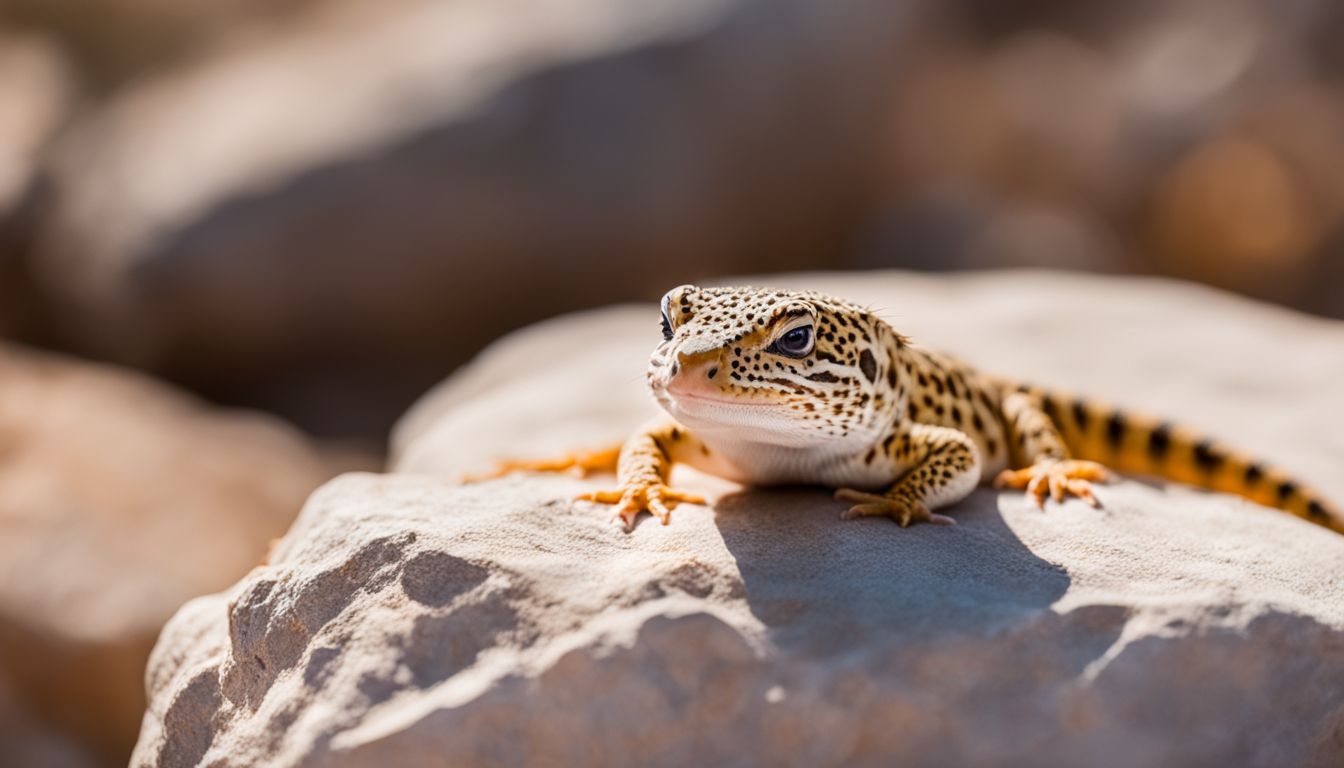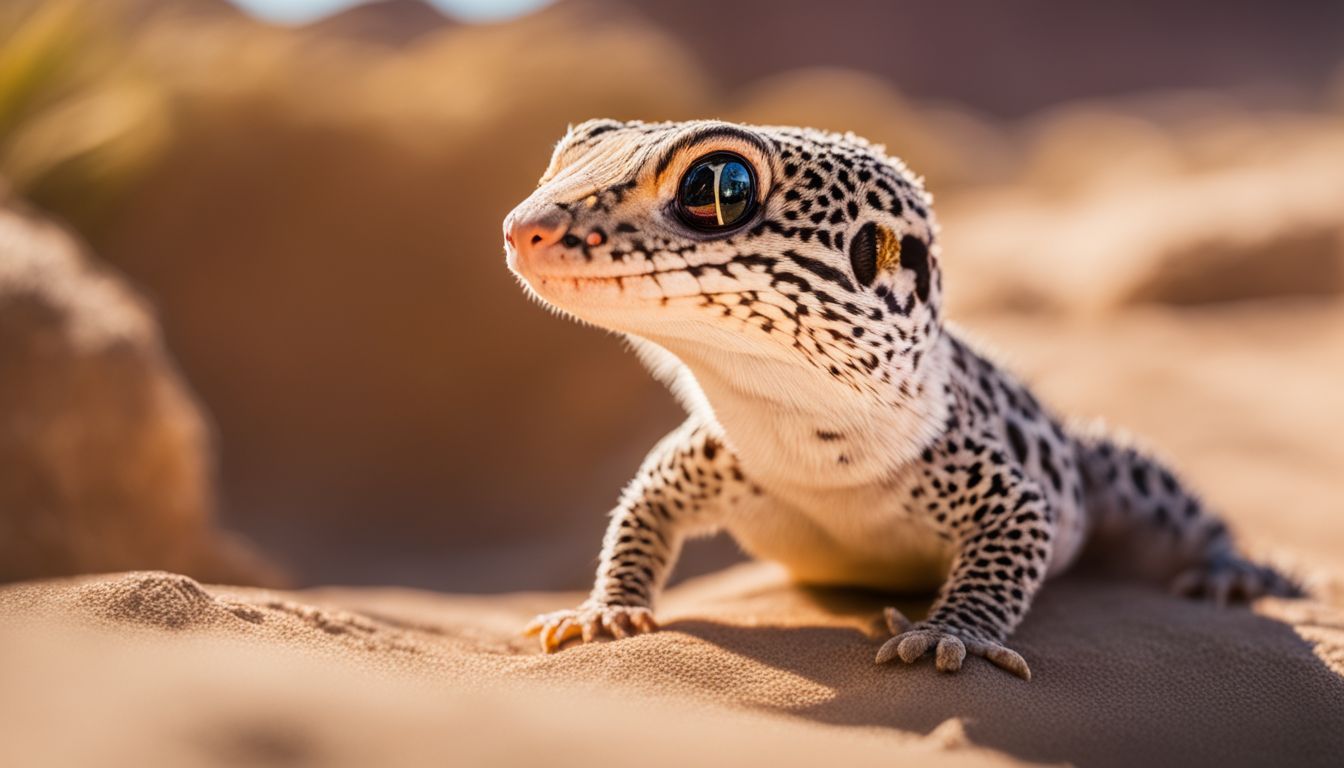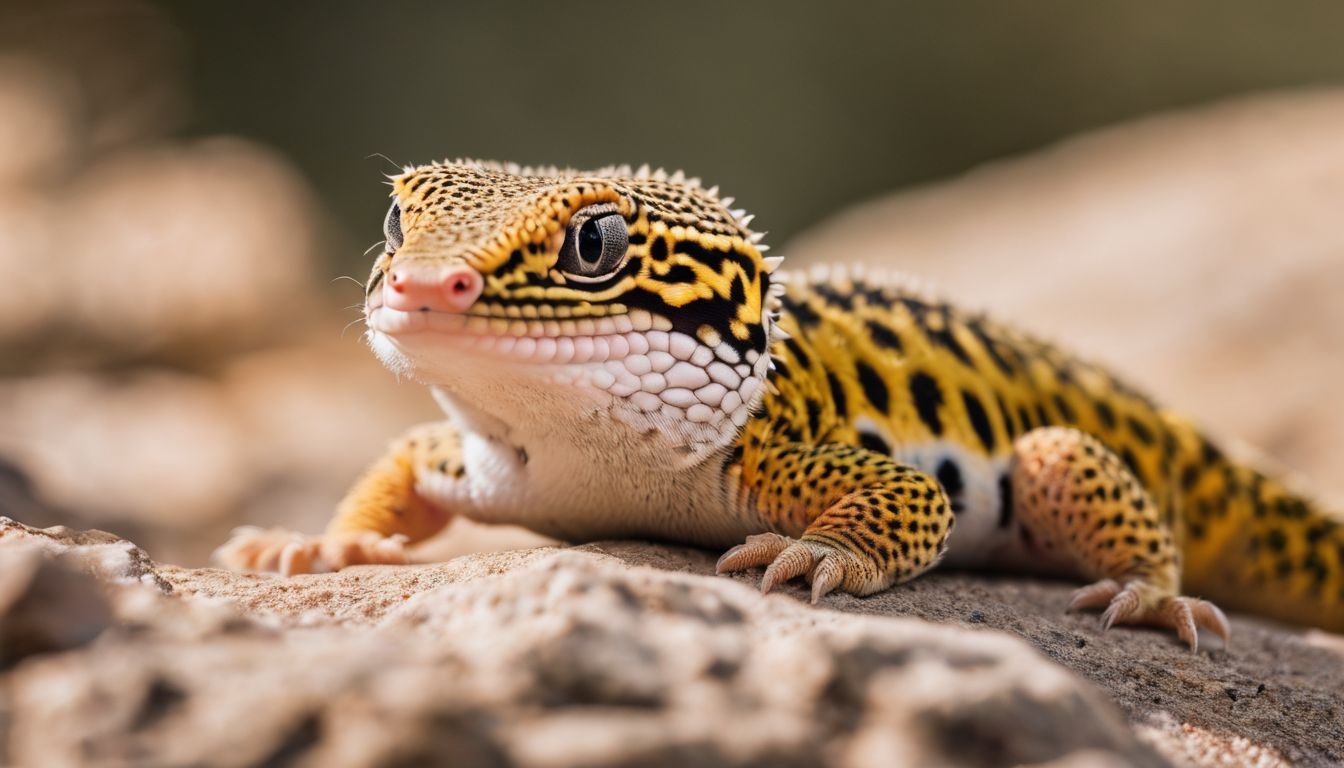If you’ve ever noticed your leopard gecko leaving behind a puddle of clear liquid instead of the usual pasty white urates, you might be scratching your head in concern. After all, these fascinating little reptiles are known for their distinctive elimination habits, and any change can seem alarming.
Leos, as they’re affectionately called by enthusiasts, have unique biological processes that sometimes puzzle even seasoned owners.
One important fact to note is that while seeing a leopard gecko pee liquid isn’t normal behavior it does happen occasionally and there are several reasons why it could occur; from overhydration to high levels of stress.
In this article, we’ll dive into the possible causes of this unusual urination and what it tells us about your scaly friend’s health. You’ll discover how to spot early signs of trouble and learn preventive care tips to keep your gecko happy and hydrated without going overboard.
Ready to become a leapin’ gecko expert? Keep reading!
Key Takeaways
- Leopard geckos usually excrete solid white or yellowish urates, but if they pee clear liquid, it might indicate overhydration, stress, fear, illness, or excessive water intake.
- Proper hydration is crucial for leopard geckos’ health. Ensure clean water is always available in their enclosure and monitor their water intake to prevent overhydration.
- Environmental stressors such as excessive handling or rubbing against objects can lead to liquid urination. Creating a calm and safe environment can help minimize these behaviors and reduce distress for your pet.
- Recognizing signs of illness in leopard geckos, such as changes in eating habits, activity levels, bodily abnormalities, or unusual discharge, is essential. Consult a veterinarian promptly if you notice any concerning symptoms.
The Science Behind Leopard Gecko Urine

Leopard gecko urine is typically a combination of liquid waste and solid urates, which help them conserve water. The appearance of their urine can vary from clear liquid to white, chalky urates, depending on hydration levels and other factors.
Typical Appearance of Leopard Gecko Urine
Gecko urine often looks different than you might expect. Instead of liquid, it’s usually a white or yellowish solid chunk called urate. This is because geckos live in dry places and need to keep water inside their bodies.
They get rid of waste without losing much water.
If you see wet spots instead, your gecko may be drinking too much or could be feeling sick. It’s good to check if the pee goes back to looking like dry chunks after a while. If it stays watery, this could mean something isn’t right with your pet’s health.
The Function of Urates in Gecko Excretion
Leopard geckos get rid of waste in a special way. Their bodies make a white or yellowish chunky substance called urates. Urates are what’s left after their body takes out the useful water and nutrients from their food.
This method is good for living in dry places because it helps them keep as much water as they can.
When you see these whitish lumps, that means your leopard gecko is healthy and getting rid of waste properly. But when the pee looks more like clear liquid, this could mean something else.
It might show they’re drinking too much or have another health problem that needs checking by a vet.
Unusual Leopard Gecko Urination Explained

When leopard geckos urinate liquid instead of the typical solid urates, it can be a cause for concern. This section will explore the reasons behind this unusual behavior, including hydration levels and stress-induced urination.
Reasons for Liquid Urination in Leopard Geckos
Leopard geckos sometimes pee liquid that looks clear. This might seem weird, but there are a few reasons it can happen.
- They might be scared or stressed: Leopard geckos could pee clear liquid if they feel threatened or if something is making them nervous.
- Drinking too much water: When these little reptiles drink more than usual, their pee can get really watery and look clear.
- Health issues are possible: If your gecko suddenly starts to pee clear liquid and then stops, it could mean it’s sick. You might want to talk to a vet.
- They need more water: Not drinking enough can also cause clear pee. Make sure to give your gecko enough clean water.
- After a warm bath: Sometimes giving your gecko a bath makes them go to the bathroom. You may see some clear liquid because of extra fluids in their body.
- It could be fear: A leopard gecko might let out some pee as a way to protect itself when afraid.
- Look for other signs: Pay attention to how your gecko acts and eats. Changes might show there’s a health problem.
The Role of Hydration and Overhydration
Proper hydration is crucial for your leopard gecko’s health. Ensure that there is always clean water available in their enclosure. If you notice your gecko drinking excessively, it could be a sign of overhydration.
This may lead to clear liquid urination and potential health issues, so it’s important to monitor their water intake closely.
Keep an eye on the amount of water your gecko consumes and the frequency of urination as excessive drinking can indicate a problem. Also, make sure to consult a veterinarian if you observe any unusual behaviors or changes in their urination patterns.
Stress-Induced Liquid Urination, including environmental stressors like rubbing against things
When leopard geckos experience stress, they may pee in a liquid form. This could be due to various reasons such as being scared or feeling threatened when handled. Environmental stressors like excessive handling or rubbing against things might also lead to the gecko’s nervous urination.
It’s essential to create a calm and safe environment for them, minimizing behaviors that can cause distress.
Ensuring your leopard gecko feels secure is crucial in preventing stressful urination episodes. Paying attention to their behavior and surroundings can help identify potential stress triggers.
Health Implications of Unusual Urination
Recognizing signs of illness in your leopard gecko is crucial, and unusual urination can be a telltale sign. If you notice any concerning changes in your gecko’s urine, it’s important to consult with a veterinarian specializing in reptile care for proper diagnosis and treatment.
Recognizing Signs of Illness
Recognizing Signs of Illness in your leopard gecko is important for their well-being.
- Watch for changes in eating habits, such as decreased appetite or refusal to eat.
- Monitor their water intake; if they are drinking significantly more or less than usual, it could be a sign of illness.
- Keep an eye on their activity level; lethargy or unusual behavior may indicate a health issue.
- Look out for any swelling, lumps, or abnormalities on their body.
- Check for mucus around the mouth or nose and discharge from the eyes.
- Pay attention to any wheezing, difficulty breathing, or audible clicking noises when breathing.
- Note any changes in skin color, texture, or shedding patterns.
- Be aware of any signs of discomfort or pain, such as favoring one leg.
When to Consult a Veterinarian
If your leopard gecko is consistently peeing clear liquid or displaying other concerning symptoms such as lethargy, loss of appetite, or unusual behavior, it is crucial to seek veterinary care promptly.
A sudden change in urination patterns or the appearance of the urine can indicate underlying health issues that require professional attention. When in doubt about your gecko’s health, consulting a veterinarian experienced with reptiles can help identify and address any potential medical concerns.
– Preventative Measures and Care Tips
Preventative Measures and Care Tips
Provide your leopard gecko with proper hydration by misting their enclosure and offering a shallow water dish. Ensure a stress-free environment by minimizing handling and reducing environmental stressors such as excessive rubbing against objects.
Providing Proper Hydration
Ensure a shallow dish of clean water is always available in the gecko’s enclosure.
Ensuring a Stress-Free Environment, with a note on the importance of minimizing behaviors like rubbing against things
Create a comfortable habitat for your leopard gecko. Avoid sudden loud noises and excessive handling, as these can stress them out. Ensure hiding spots are available for privacy and to reduce anxiety.
Keep the enclosure away from high-traffic areas to minimize disturbances. Remember that a stressed gecko is more likely to exhibit unusual behaviors like liquid urination.
Conclusion
In conclusion, understanding why your leopard gecko is peeing liquid is vital for their health. By recognizing signs of illness and providing proper hydration, you can prevent potential issues.
These practical tips can make a significant impact on your pet’s well-being. Remember to monitor their habits closely and seek veterinary attention if needed. Take action now to ensure a healthy and happy life for your leopard gecko.
For additional information on how to create a comfortable environment for your leopard gecko and prevent stress-related behaviors such as rubbing against objects, please read our detailed guide “Why Is My Leopard Gecko Rubbing Against Things?”.
FAQs
1. Why is my leopard gecko peeing liquid?
Your leopard gecko may be peeing liquid due to stress, dehydration, or a possible underlying health issue.
2. How can I help my leopard gecko if it’s peeing liquid?
Ensure your leopard gecko has access to fresh water at all times and provide a proper diet with enough moisture content. If the issue persists, consult a reptile veterinarian for examination and advice.
3. Is it normal for leopard geckos to have runny pee?
Leopard geckos normally produce urates (white solid substance) along with their urine; however, runny or watery urine could indicate an underlying problem that needs attention.
4. Can the enclosure setup affect my leopard gecko’s urination patterns?
Yes, factors such as improper temperature gradients, inadequate humidity levels, or unsanitary conditions in the enclosure can contribute to abnormal urination patterns in leopard geckos.
5. What are other signs of health issues in leopard geckos apart from unusual urination?
Signs of health issues in leopard geckos include loss of appetite, weight loss, lethargy, abnormal shedding, and changes in behavior or appearance.




